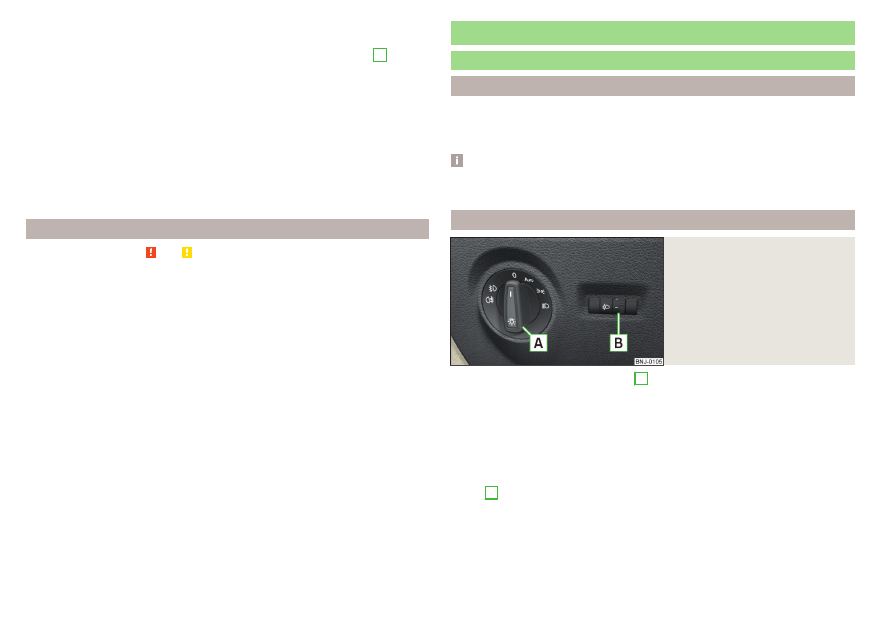Skoda Fabia (2019 year). Manual - part 4

Closing
›
Press and hold the button on the key.
›
or: Switch off the ignition, open the driver's door and hold the key
A
until it
stops in the closed position
›
In the KESSY system, hold your finger on the sensor on the outside of the
door handle of the front door
The convenience operation will only function correctly if all the windows auto-
matically open/close properly.
Convenience opening or closing the window using the key in the driver's door
locking cylinder is only possible within 45 seconds of locking the vehicle.
The movement of the window is stopped immediately when the respective
button is released.
Malfunctions
Read and observe and on page 58 first.
Repeatedly opening and closing the window can cause the window mechanism
to overheat and become temporarily blocked. You will be able to operate the
window again as soon as the operating mechanisms has cooled down.
After disconnecting the vehicle battery, automatic opening / closing the win-
dow can be deactivated. In this case, the system must be activated as follows.
Activating window operation
›
Switch on the ignition.
›
Pull the top edge of the button and close the window.
›
Release the button.
›
Pull up the respective button and hold for 1 second.
Lights and visibility
Light
Introduction
The lights work only with the ignition on, unless otherwise stated.
For the basic position of the light switch, use position .
Note
The headlights may mist up temporarily. When the light is on, the light-emit-
ting surface demists after a short time.
Operating the lights
Fig. 54
Light switch and control dial for
headlight range adjustment
Toswitch the lights on/off,turn the
A
switch to one of the following
positions (equipment-dependent).
Switching off lights (except daytime running lights)
Switching the light on/off automatically
Switching on the parking lights or parking lights on both sides
Switch on low beam
Depending on the vehicle load, adjust the headlight range by turning the con-
troller
B
to the following positions.
Front seats occupied, boot empty
All seats occupied, boot empty
All seats occupied, boot loaded
Driver seat occupied, boot loaded
60
Operation